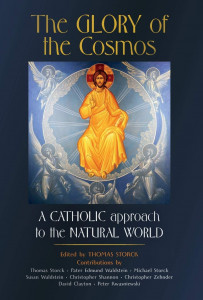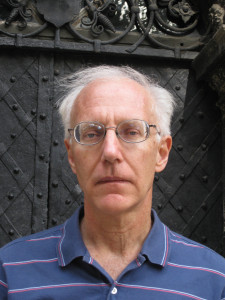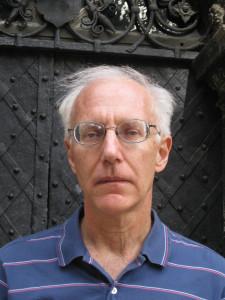The US presidential campaign continues to entertain the public with sensational news. On July 13, Republican candidate Donald Trump survived an assassination attempt in Butler, Pennsylvania. The shooter’s motives and background remain obscure. On July 21, President Joe Biden, under pressure from his own party, announced that he would not seek re-election. Biden is 81 years old; Trump is 78.
The people of the United States do not elect their president and vice-president directly. The winning party in each state appoints electors, who then cast their votes for president and vice-president. States with larger populations have more electors. The total number of electors’ votes decides the election. Thus, a candidate who receives a majority of electors’ votes will win even if he has not received a majority of votes of the citizens. This has in fact happened more than once.
Another consequence of this system of indirect elections is that presidential campaigns focus on states where voters are divided (the “swing states,” like Pennsylvania and Wisconsin), so that the outcome there can still be influenced. Many states, including some large ones, are classified as “Blue” (predominantly Democratic, such as California and New York) or “Red” (predominantly Republican, such as Texas), and thus not worth a major expense of campaign funds.
Although the Constitution does not prescribe the number of political parties, in nearly all elections only two parties have had serious political prospects, and the systems of campaigning and voting favor that arrangement. This may be a factor in the kind of sharp division that plagues American politics today. At the same time, some call this system a “duopoly,” pointing out that the Democratic and Republican parties often represent the same interests and, in effect, share power. In this view, a sharp polemical division on the surface can serve to mask an essential duopoly.
The issues in the 2024 US presidential election include the economy, immigration across the southern border, the environment (particularly climate change), socio-cultural-ethical issues (abortion, same-sex marriage, and LGBTQ rights), socio-political issues (leftist “woke” ideology in some corporations, universities, and other elite institutions), the US role in Israel and Gaza, Ukraine aid, and foreign threats (Russia, China, Iran, and North Korea). Traditionally, economic issues come first, foreign policy comes last.
Also at issue are the personalities of the candidates – a major factor in the mind of the electorate. Donald Trump’s background and character are well known. Despite – or because of – his recent criminal convictions and pending lawsuits, he is something of a folk hero to many Americans who, we must remember, have always had a fondness for rule-breakers and outlaws. The United States, after all, was born in an act of disobedience to authority. Mr. Trump’s political style has special appeal to those who resent the liberal “establishment” and the East and West Coast elites. His opponents see him as a threat to the rule of law and to the rules-based international order. The vice-presidential candidate, J.D. Vance, is more complex and difficult to categorize, as we shall see below.
On the other side, the presumptive Democratic candidate, Kamala Harris, tends to appeal to very different demographic groups – the young, the well-educated, the affluent, and women. Her minority parentage – Jamaican and East Indian – is an additional plus, even though the fact that her parents were professionals prevents her from claiming a disadvantaged background. Her views are solidly liberal. At this point, the Democratic candidate for vice-president has yet to be determined.
Thus, the two chief political parties have come to represent two rather different types of Americans. It is sometimes said that the Republican Party has moved to the right, while the Democratic Party has moved to the left. But that is only partly true.
In terms of their philosophy, Republicans tend to be more religious than Democrats. The popularity among Republicans of Donald Trump, who can be considered a “conservative” only in a very specific American sense, has surprised many. His base of support includes white middle- and lower-class voters who resent the dominance of the federal government. They also resent the imposition of “woke ideology,” particularly what they see as Democratic manipulation of racial, ethnic, and gender-based minorities. At the same time, Republicans include part of the corporate elite attracted by Trump’s tax cuts. “America Firsters,” nationalists who want to “Make America Great Again” (“MAGA”), are among Trump’s most devoted supporters.
The Republican candidate for Vice President, J.D. Vance, represents a contrast with Donald Trump. His family migrated from Appalachia, a historically impoverished rural area. His home state of Ohio belongs to the “Rust Belt,” a socio-economically depressed region of abandoned coal mines, factories, and steel mills in some ways comparable to Ukraine’s Donbas. He champions the poor white workers of this area, many of whom are unemployed and unemployable, and among whom opioid addiction and suicide are widespread. Much of this population once belonged to the Democratic Party, which they feel has abandoned them in favor of “identity politics” and a “woke” agenda with high moral pretensions but few achievements. Among them are many descendants of early East European immigrants, including our people from Galicia and Transcarpathia. Vance himself is an embodiment of the American dream: he graduated from Yale law school and published the highly successful memoir Hillbilly Elegy, which was made into a movie. His political philosophy, which opposes extreme individualism, liberalism, and globalism, and supports workers, families, communities, and the common good, is influenced by Catholic social teaching (he became a Catholic in 2019). He is considered a member of the “post-liberal Right.” By contrast with Trump, Vance is a well-read intellectual, who has been influenced by fellow convert Sohrab Ahmari, Patrick Deneen, Orthodox Christian Rod Dreher, and the French philosopher Rene Girard.
Donald Trump’s views on Ukraine – and other issues – seem inconsistent and unpredictable. He does believe that Europe should provide its “fair share” of aid to Ukraine. But he has also expressed admiration for Vladimir Putin. Vance, a proponent of peace, is critical of the Democratic “global interventionists” and their “forever wars” – military actions in places like Iraq and Afghanistan that have cost countless human lives yet brought no lasting improvement. For this reason, he opposes aid to Ukraine, which he believes is too costly, ineffective, and could never suffice to win the war in any case. Like Trump, he believes that the chief threat to US security is China. It is argued that Trump and Vance are simply realists: unlike the “globalist interventionists,” they realize the limits of what the US can do.
Democrats today tend to be more secular in their world view than Republicans. President Biden, though a practicing Catholic, is often criticized for positions inconsistent with Catholic teaching. His designated successor as presidential candidate, Kamala Harris, is a Baptist. As California attorney general and later a senator, Harris made a reputation as an effective prosecutor who was tough on crime. She consistently supports “abortion rights.” In hearings on Brian Buescher’s nomination to a federal judgeship, Senator Harris and a colleague on the Judiciary Committee brought up his membership in the Knights of Columbus, a Catholic fraternal laymen’s organization. Pointing out that the Knights were an all-male society, she asked whether, when Buescher had joined it, he was aware that it opposed “a woman’s right to choose.” Some Catholics, as well as a prominent Jewish rabbi, perceived this as an underhanded attempt to bar a person from holding public office on the basis of his religious beliefs, in violation of the Constitution. Harris has also been criticized for a lack of ideas, and difficulty in speaking logically and coherently. As Vice-President under Biden she kept a low profile, and was considered one of the least popular holders of that office.
Kamala Harris has spoken critically of Russia and its war on Ukraine, stressing human rights abuses and war crimes.
How do US Christians view the election? They are certainly divided. But this may not be a meaningful question, for many Americans’ religious identities seem unrelated to their political commitments. For most younger Americans, politics appears to have become more important than religion. Thus, neither Donald Trump’s nor Kamala Harris’ religious views seem to matter much to voters.
Nevertheless, religion does remain a factor in the opinions of many Americans on specific issues. In foreign policy, for example, Christian conservatives oppose US and United Nations promotion of secular ideology in traditional and religious countries, for example in Africa. Some, like Rod Dreher, praise Hungarian prime minister Victor Orban’s pro-family and anti-immigration policies. These are likely to vote Republican. Many of them are also motivated by their opposition to US “democratic imperialism.” They may have been influenced by Russian or Chinese anti-American propaganda. In one notorious instance recently pointed out by Yale professor Timothy Snyder in his congressional testimony, a US congressman repeated a falsehood spread by the Kremlin, and drawn by his staff from the internet, in legislative session. Perhaps due to such propaganda, some US conservatives see Russia as a bastion of Christian morality, and accuse Ukraine of being pro-LGBTQ and subservient to decadent American cultural influences.
Statistically, the US has the fourth largest number of Catholics in the world: some 70 million or 20% of the population. Their degree of belief and practice, of course, is a different matter. Hispanic immigration may have saved the “Catholic vote” in US politics from extinction. Some Hispanics, including Evangelical converts, support Trump because they oppose Democrats on gender and religious liberty issues, or because as legal immigrants they resent Democratic concessions to illegals. Other Catholics, however, support the Democrats’ commitment to the “DEI” program of Diversity, Equality, and Inclusion, or to more traditional Catholic social values.
Many Catholics sit in Congress: 27% of Senators and 29% of Representatives. They are divided, however, on a range of questions. Many focus on abortion, same-sex marriage, and gender issues while neglecting Catholic social teaching, which remains little-known (Vance being an exception to this rule).
With regard to foreign policy, some American Catholics see a global opposition between the developed but secular North and a heavily Catholic South. Like many of their co-religionists in what used to be called the Third World, they oppose the foreign policies of former colonizers like the European states and the US, and see Russia as a champion of the colonized. In that view, Ukraine is a mere vassal of a neo-imperialist NATO. Others, influenced by the views of some Vatican diplomats, treat the Russian war against Ukraine as a “dispute” between parties in pari delicto, and therefore favor a diplomatic solution through dialogue and compromise. However, some prominent Catholic commentators like George Weigel view Ukraine’s self-defense as a “just war” deserving US support.
Among American Catholics, other Christians, and non-Christians, pacifism remains a marginal minority view. Condemnation of the arms manufacturing industry goes back at least a century, bolstered by more recent criticism of the military-industrial complex. Obviously, opposition to weapons manufacture means opposition to providing arms to Ukraine. But the theory that the current administration’s “drip-drip” approach to Ukraine aid benefits arms manufacturers more, and helps Ukraine less, than would a massive and decisive influx of arms, is not implausible.
Most American (and not only American) voters seem incapable of seeing the issue of Ukraine through Ukrainian eyes, but only through prism of US politics. The same myopia characterizes American politicians. Fortunately, Ukraine can be seen as both a liberal and a conservative cause.
The Ukrainian diaspora is divided on the presidential election. The problem is that while Trump and Vance oppose Ukraine aid, their Democratic opponents are committed to domestic policies (especially on abortion and gender issues) offensive not only to Ukrainian Catholics, but to Ukrainian Orthodox and Evangelicals as well. Ukrainian Americans are also divided on matters like immigration, climate change, and the economy.
We do not yet know whether Kamala Harris would continue President’s Biden’s level of support for Ukraine (which our diaspora regards as grossly inadequate), increase it, or reduce it. Nor can we know for sure whether Trump would let Russia have all, or part, of Ukraine. Their choices for Secretary of State, Secretary of Defense, and National Security Advisor (the key offices for Ukraine policy) will be of primary importance. At this point, we can only guess who they will be.
For Ukrainian Catholics, however, the election presents an unpleasant choice: to vote for the “anti-Catholic” but pro-Ukrainian Democrats, the “anti-Ukrainian” but Catholic-friendly Republicans, to not vote at all, or to vote for an alternative party that, while perhaps favoring both Ukrainian and Catholic interests, has no chance of winning. The pragmatic (though ethically problematic) choice would seem to be the first – provided that once the Democrats win the election and Ukraine wins the war, Ukrainian Americans can turn their attention to combating those Democratic domestic policies they oppose.
Andrew Sorokowsky



